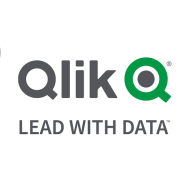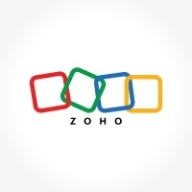

Zoho Analytics and Qlik Sense compete in the business intelligence software category. While both tools offer strong data analysis capabilities, Qlik Sense is slightly favored due to its powerful processing and customization abilities, appealing to users who require deep insights.
Features: Zoho Analytics provides automation in reporting, seamless integration with other Zoho products, and ease of sharing dashboards, making it user-friendly. However, its simplicity might not meet the needs of advanced users. Qlik Sense excels in in-memory processing, extensive data visualization options, and offers self-service capabilities for experienced users, making it highly customizable and suitable for complex analysis.
Room for Improvement: Zoho Analytics could enhance its graphical options, improve navigation, and better handle complex data queries. Users seek improvements in customer support responsiveness and more frequent data updates. Qlik Sense could improve integration with external data sources and error handling, while also making self-service features more intuitive and offering expanded visualization tools.
Ease of Deployment and Customer Service: Zoho Analytics offers flexible deployment options, including private, public, and hybrid clouds, catering to businesses of various sizes. Customer support receives mixed reviews due to inconsistent issue resolution. Qlik Sense mainly supports on-premises deployments, appealing to larger enterprises. Its customer service is generally praised, but users seek quicker response times and more technical assistance.
Pricing and ROI: Zoho Analytics offers affordable pricing, with plans starting at $50 per month, making it accessible to small businesses and delivering good ROI through reduced staffing and IT costs. Qlik Sense is noted for higher pricing, potentially limiting access for smaller companies, but its robust features justify the investment for enterprises needing advanced analytics. Both platforms report positive ROI, with Zoho standing out for cost-effectiveness in smaller budgets and Qlik providing significant value for large-scale data projects.
In my organization, we moved from OBI to Qlik Sense due to limitations with OBI, resulting in very high ROI.
The integration with Zoho People is particularly important because I can access real-time data at any time, including what's happening in the last minute.
After incorporating Zoho Analytics, now all our decisions come from its reviews.
Any time I've integrated customer data using Zoho, I've received great feedback and referrals, and Zoho has gotten me referrals and more customers.
While tech support is comprehensive, the stability of Qlik Sense means I generally do not need it.
Technical support requires improvement.
In Turkey, the consultant firms are very professional, and they support you.
The support team doesn't have full awareness of the system capabilities.
Zoho support provides assistance through live chat to guide us.
If you need help with any issue you face, you can directly call them.
It performs well in terms of performance and load compared to others.
Qlik Sense helps analyze data and can handle larger amounts of data compared to other BI tools.
It is easily scalable with Microsoft, with other services Azure and other tools they provide.
Zoho Analytics can easily adapt to our needs when they grow, and you don't need much knowledge to adapt it; even basic Excel knowledge is sufficient.
You can utilize URL features to redirect users to their records in Zoho CRM or Zoho Desk with just a click.
Zoho Analytics is scalable.
The stability is very good.
A major missing feature compared to Power BI is the ability to create multiple DAX measures or row-level context, which would be useful for showing custom profit and loss statements.
The stability and reliability of Zoho Analytics have been good over time.
The stability and reliability of the product is crucial for optimal performance.
Power BI has better visualizations and interactions with updates in 2023 that provide ease of use.
Providing an API feature to access data from the dashboard or QEDs could be beneficial.
There should be more comprehensive documentation and explanatory videos available to help clients understand and calculate capacity-based pricing, making it easier to predict costs before implementing Qlik Sense Cloud.
The collaborative features of Zoho Analytics have faced one issue: they have tried to reduce the sync time with most Zoho applications, but even with CRM, the sync still takes one hour.
While Power BI uses Power Query, an intuitive and powerful tool that allows data manipulation in any way, Zoho Analytics has limitations.
Having to pay for 25 users when only 11 are needed creates an issue with the pricing structure.
It is just about how expensive it is to implement.
Compared to Power BI, it is definitely costly.
Among the BI tools and data analytics tools, Qlik is the most expensive.
The annual subscription cost of Zoho Analytics is equivalent to about half of the monthly cost of tools such as Tableau or Power BI.
From an end-user perspective, it's convenient and performance-oriented, providing something meaningful from all the organization's data.
It is a single product that I can use as an ETL database, BI, and more.
It has an interactive interface with Qlik graphs, pivot, and interactivity, which makes it easier to use than other tools.
The AI called Zia in Zoho Analytics is extremely useful. Whenever I build a chart or dashboard, I can generate a summary of insights using this AI tool, which is very convenient for both leadership and manager level teams to understand the data concepts.
The best feature is that in the same tool, we can use SQL and business intelligence capabilities.
These multiple dashboards are available to view in a single place, which is very beneficial.
| Product | Market Share (%) |
|---|---|
| Qlik Sense | 7.3% |
| Zoho Analytics | 1.6% |
| Other | 91.1% |


| Company Size | Count |
|---|---|
| Small Business | 32 |
| Midsize Enterprise | 40 |
| Large Enterprise | 83 |
| Company Size | Count |
|---|---|
| Small Business | 27 |
| Midsize Enterprise | 4 |
| Large Enterprise | 4 |
Qlik Sense is a visual analytics and business intelligence (BI) platform that gives users full control over their system’s data. From this platform they can control every aspect of their system data. It maximizes an organization’s ability to make decisions driven by their data.
Benefits of Qlik Sense
Some of the benefits of using Qlik Sense include:
Reviews from Real Users
Qlik Sense stands out among its competitors for a number of reasons. Two major ones are its associative analytics technology and its remote access capability. Qlik Sense employs an associative analytics engine that gives users the ability to take their data analytics to the next level. Users can create visual connections between different datasets spread across their network, creating deep insights that enable users to gain a full understanding of their data. This engine is easily scaled up to allow a large number of users to benefit from the deep insights that it provides. Users can access Qlik Sense from anywhere in the world. Qlik Sense has an online portal that can be used consistently from anywhere at all. Having the ability to remotely analyze data gives users flexibility when it comes to choosing how to deploy their manpower.
Jarno L., the managing director of B2IT, writes, “The associative technology features are the solution's most valuable aspects. Qlik was the first company to implement an in-memory associative analytics engine. This basically means that all data is loaded into memory, but it also means that instead of joining data together, the data is associated together. From the front end, from the user interface point of view, data can be joined or included or excluded on the fly. It can be drilled down and drilled through and users can slice and dice it and that type of thing can be done from anywhere in the data to any other place in the data. It doesn't have to be predefined. It doesn't have to have hierarchies or anything like that.”
Tami S., the senior business intelligence analyst at the La Jolla Group, writes, “With the changing business landscape, it is nice to access Qlik Sense through an external website. As an organization when we use QlikView Desktop, we need to connect to our internal network. We can access QlikView through the QlikView access point but the website has a little different look and feel than the desktop application. We appreciate that Qlik Sense is browser-based and the user experience is the same whether at home, in the office or on a boat. As long as the user has internet access, performance is the same.”
Zoho Reports is a powerful, easy-to-use and highly scalable cloud-based reporting and business intelligence platform for small to medium-sized businesses. Its flexible pay-as-you-go pricing model and scope for customization allow businesses to tailor it to their unique needs.
We monitor all Data Visualization reviews to prevent fraudulent reviews and keep review quality high. We do not post reviews by company employees or direct competitors. We validate each review for authenticity via cross-reference with LinkedIn, and personal follow-up with the reviewer when necessary.